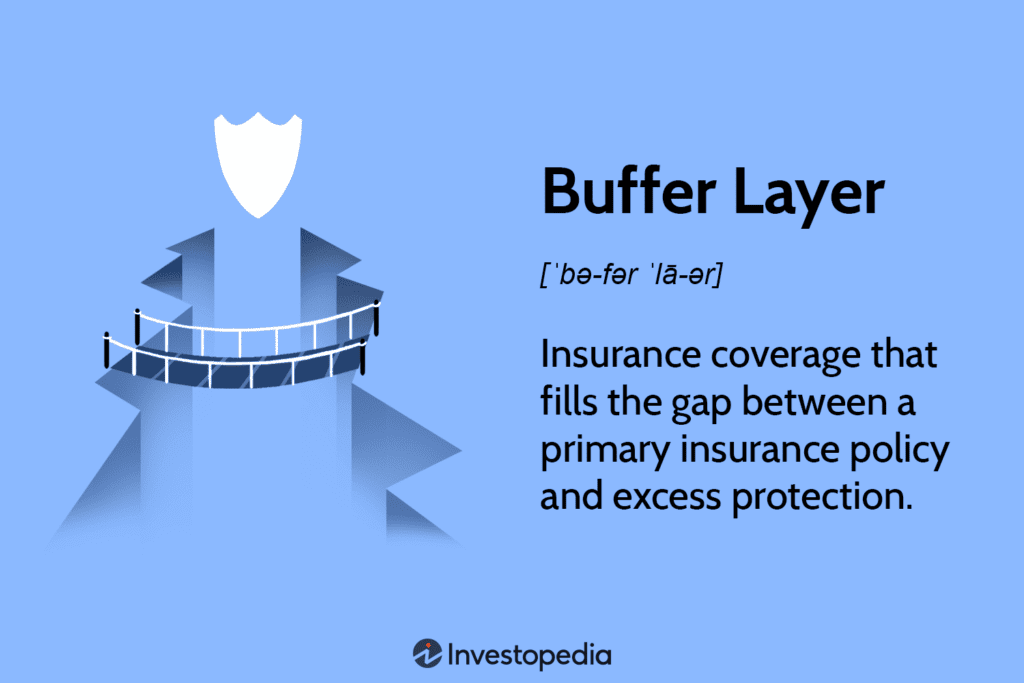Understanding Buffer Layers
A buffer layer is a type of insurance that acts as a safety net, covering the gap between a main insurance policy and excess coverage. This layer is valuable for those managing complex risks, helping reduce costs related to significant insurance claims.
Typically employed for liability insurance, buffer layers can also extend to other claims. They are particularly beneficial for individuals and businesses facing more challenging insurance conditions, such as trucking firms and homeowners associations.
Key Points
How Buffer Layers Function
Insurance policies provide crucial protection against losses and require individuals or businesses to work with insurance companies for coverage. Insurers evaluate risk and set premiums based on this assessment.
Primary insurance covers specific triggering events that activate the insurer’s liability, like flood insurance that kicks in during floods. However, primary policies often have limits, necessitating excess coverage for added protection.
Excess insurance extends beyond primary coverage, but might only pay out for claims exceeding a specified threshold. For instance, if the primary insurance covers $100,000 and excess coverage begins at $300,000, this creates a $200,000 gap that a buffer layer can address.
This additional coverage fills the gap, thus protecting against uncovered losses. While primarily used for liability, buffer layers can be utilized across various claims. Companies taking on higher risks can particularly benefit from this insurance strategy.
Who Should Consider Buffer Layer Insurance?
Not every entity will require buffer layer insurance, but it is increasingly valuable for those dealing with multiple or significant risks. Generally, commercial entities are more likely candidates for such coverage, especially if they struggle to obtain standard insurance.
Industries like trucking, condominium associations, and apartments may find this type of insurance essential. Additionally, professionals in high-liability fields, such as medical providers and legal practitioners, should consider it too.


